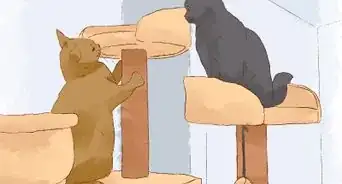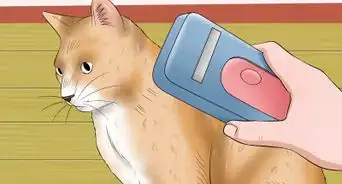This article was co-authored by Molly DeVoss and by wikiHow staff writer, Hannah Madden. Molly DeVoss is a Certified Feline Training and Behavior Specialist (CFTBS), a Certified Cat Behavior Consultant (CCBC), a Fear Free Certified Trainer (FFCT), and the Founder of Cat Behavior Solutions. Molly specializes in using positive reinforcement to modify and prevent unwanted behaviors in cats and reduce cat shelter surrender. Molly has sat on the Dallas Animal Advisory committee since 2013 and was voted one of the Top 12 Extraordinary Cat Behaviorists of 2020 by Catpetclub.com. She is certified by both the Animal Behavior Institute and the International Association of Animal Behavior Consultants. She is also the host of the weekly podcast Cat Talk Radio.
This article has been viewed 10,853 times.
Keeping a cat as a pet is a fun and rewarding experience, but it can be challenging to feel safe letting them roam around outside. Wild animals, cars, and even other cats can pose a danger to your furry friend if they leave your yard to explore unattended. Encourage your cat to stay in your backyard by planting cat friendly plants, installing a 6 feet (1.8 m) fence, or building them a cat enclosure to play in.
Steps
Training Your Cat to Stay in Your Yard
-
1Bond with your cat to make them want to stay near you. Your cat is much more likely to return to your yard if they like you and know that you love them. Spend time playing with your cat, petting them, and giving them cat treats to let them know that you care about them. It may seem like some cats don’t appreciate your attention, but they do like knowing they are taken care of.[1]
- Try calling your cat over to you with a treat and petting them while they eat it.
- The fastest way to a cat’s heart is through their stomach. Give them plenty of yummy treats and they’ll love you in no time.
-
2Introduce a harness and leash to walk your cat. Cats do not typically like to be put on a harness and leash, but they can get used to it. Let your cat sniff and play with the harness before you put it on. Then, allow the cat to roam around wearing its harness without a leash. Finally, attach a leash to your cat’s harness and practice walking around your home and then your yard.
- Don’t expect your cat to want to go on long walks like a dog. Cats are generally not fond of exploring new areas without taking their time.
Tip: The best time to introduce a leash and harness is when your cat is young. Older cats are much more stubborn and may never get used to a harness.
Advertisement -
3Teach your cat to come to you when it is called. Your cat most likely already knows its name and how to come back to you. However, cats often choose to ignore the calls of their owner if they are doing something more interesting. Start training your cat to come when you call its name by standing 3 feet (0.91 m) away and calling them. When they walk over to you, give them a treat. Repeat this until your cat comes to you consistently, and then try upping the distance.[2]
- Younger cats are much easier to train using this technique since they don’t have behaviors ingrained in them yet.
-
4Get your cat spayed or neutered to discourage them from straying. Take your cat to the vet when they are around 5 months old to get them fixed. Fixing a cat takes away its desire to mate with other cats. This will make them more likely to stay in your yard rather than leave to find other cats to mate with. Fixing your cat also means you will never have to deal with unplanned kittens.[3]
- If your cat is older than 5 months, you can still get them spayed or neutered.
Meeting Your Cat’s Needs in the Yard
-
1Provide a shelter with a roof to protect your cat from the weather. Cats want to feel warm in the winter and cool in the summer, and they absolutely hate getting wet in the rain. Make sure your cat has an area in your yard where it can hunker down to get out of any weather extremes if they need to. Build a small cat house or leave your covered porch accessible so that your cat won’t leave your yard to find shelter elsewhere.[4]
- You can even leave out a cardboard box with a blanket inside of it for your cat, as long as the box doesn’t get wet.
-
2Leave cat food and fresh water in an accessible place. If your cat is hungry or thirsty, they may leave your yard to find food and water elsewhere. Set out a dish of food and water and make sure that it is full. If you are worried about critters getting into their food, consider leaving it inside and installing a cat door for your cat to come in and out of your home.[5]
- Use an automatic feeder or water dish if you are worried you may forget to fill up their dishes.
Warning: Raccoons are attracted to cat food and may try to steal it.
-
3Keep toys in your yard to entice your cat to come back. Cats are very smart, and they like to be stimulated mentally and physically. Leave some fake mice toys and strings with feathers on them in various places throughout your yard to keep your cat from leaving out of boredom. You can purchase cat toys at your local pet shop.[6]
-
4Plant catnip and wheatgrass around your yard to attract your cat. Cats love to nibble on wheatgrass and catnip. Plant some varieties of these plants around your yard to keep your cat coming back for more. Make sure they are in an accessible place in case your cat wants to get closer to them.[7]
- Cats also love valerian and spider plants.
Building a Barrier
-
1Put up a fence that is at least 6 feet (1.8 m) tall. Cats are great jumpers, but even they have a limit on how high they can go. A 6 feet (1.8 m) fence will be a challenge for most cats to clear, and some may not even attempt it. Check with your neighbors to see if they would be open to having a tall fence in between your yards.[8]
- Check with your city building codes to make sure you can legally build a 6 feet (1.8 m) fence.
-
2Put PVC pipes on the top of your fence so your cat can’t jump on it. Cats can jump pretty high, and may even be able to clear a 6 feet (1.8 m) fence if they have enough room. Bolt PVC pipes to the top of your fence to make it slippery so that your cat can’t jump to the top of it.[9]
- You can find PVC pipes at most hardware stores.
- You can also place an oscillating piece at the top of your fence, or even small dull spikes to discourage your cat from jumping to the top of your fence. Check with your local hardware store to see what they have in stock.
-
3Remove objects near your fence that your cat could use to jump. If you already have a tall fence, you may be wondering how your cat keeps getting out. Cats are very nimble, and will use things like branches, boxes, or even large clumps of dirt as stepping stones to jump over the top of fences. Create a 5 feet (1.5 m) radius around your fence to make it harder for your cat to jump over your fence.[10]
-
4Attach a cat net to your porch. Cat nets keep your cats enclosed while still allowing them to explore. Enclose an area, like a porch, in a net to let your cat roam around in that specific area. Let them access it from inside so they can come in and get food and water if they need to.[11]
- Cat nets also work to keep out large critters that may be roaming around your yard, like raccoons.
-
5Build a cat enclosure to extend your cat’s access to the outdoors. Make a cat enclosure out of chicken wire and large planks of wood that attach to a window of your house. Or, buy one from your local hardware store that can be installed. Allow your cat to go in and out of the enclosure whenever it wants to get fresh air or check out the outdoors.[12]
- Cat enclosures are also called “catios.”
Tip: There are many different styles of cat enclosures that you can build. Make sure to create one that is large enough for your cat to roam around in and get exercise.
References
- ↑ https://www.pawmaw.com/blog/train-and-take-care-outdoor-cat
- ↑ https://www.nationalgeographic.com/news/2018/05/animals-cats-training-pets/
- ↑ https://www.pawmaw.com/blog/train-and-take-care-outdoor-cat
- ↑ https://www.youtube.com/watch?v=y_Q9k7vY4AQ&feature=youtu.be&t=178
- ↑ https://www.pawmaw.com/blog/train-and-take-care-outdoor-cat
- ↑ https://www.pawmaw.com/blog/train-and-take-care-outdoor-cat
- ↑ https://www.dirtonmyhands.com/plants_cat_like.html
- ↑ https://www.kingborough.tas.gov.au/wp-content/uploads/2017/05/Cat-Safe-Enclosure.pdf
- ↑ https://www.kingborough.tas.gov.au/wp-content/uploads/2017/05/Cat-Safe-Enclosure.pdf
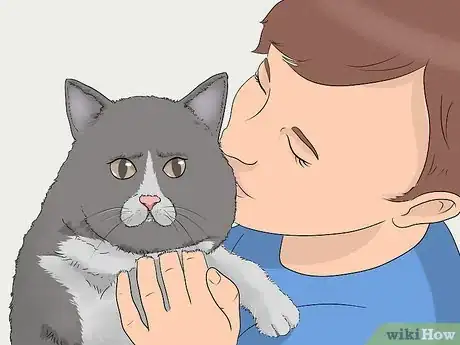
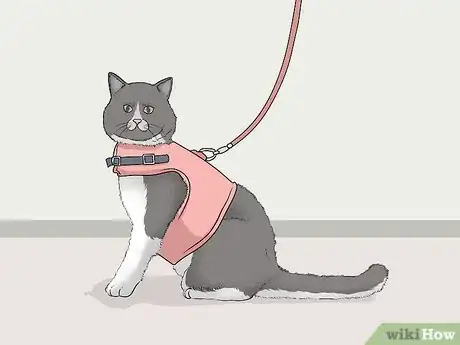

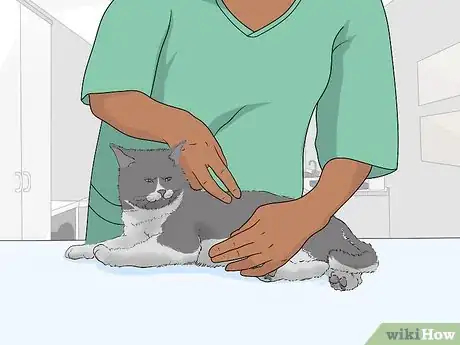
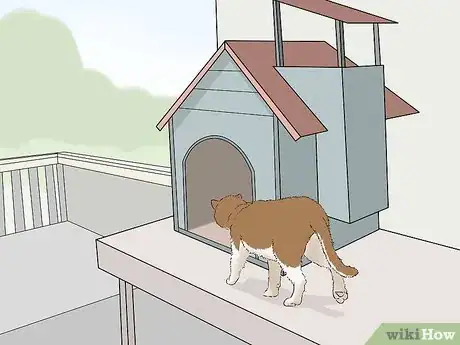

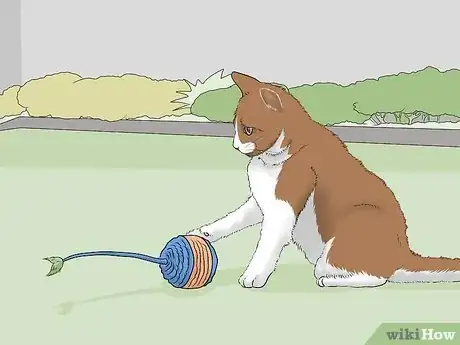

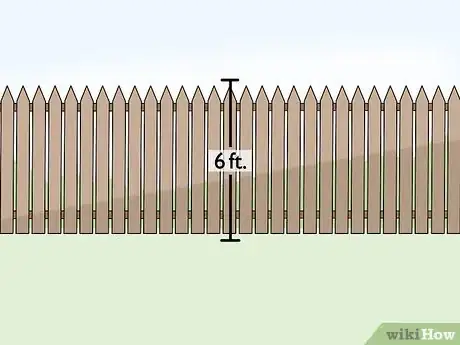
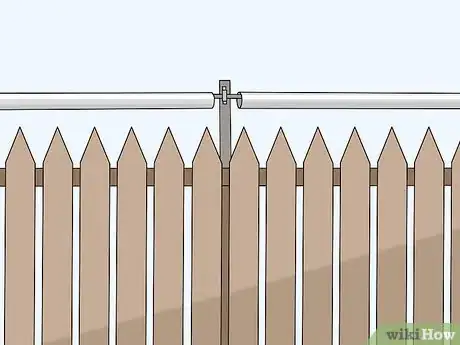
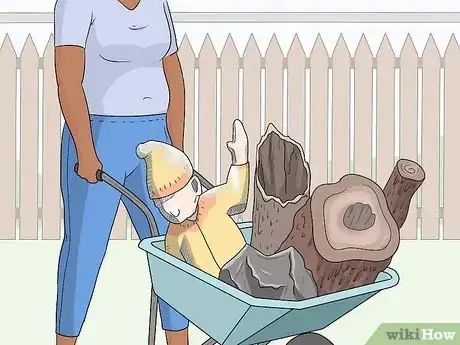
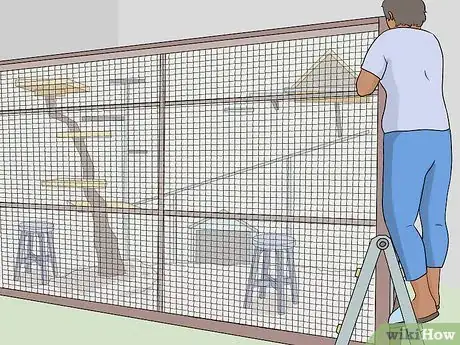
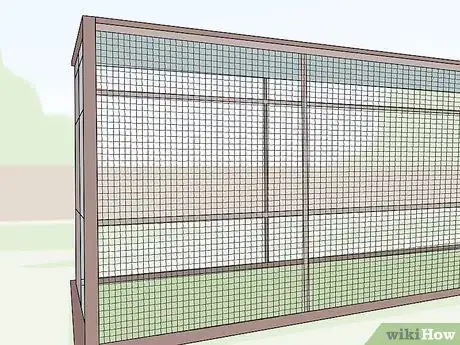





-Step-11-Version-6.webp)


